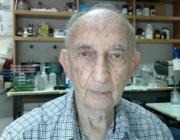Abstract:
It is disconcerting and also alarming that today clinicians are still bewildered and helpless when trying to cope with life-threatening sequelae of severe microbial infections, which very often culminate in sepsis, septic shock and death. According to CDC (the Centers for Disease Control and Prevention), the annual incidence of sepsis in the USA affects as many as 750,000 hospitalized patients and mortality rate is about 40% [1,2]. It was found in 2 complementary inpatient cohorts that up to 50% of hospital deaths were linked to sepsis [3]. Worldwide, sepsis is one of the common deadly diseases. It is one of the few conditions to strike with equal ferocity in resource-poor areas and in the developed world. Globally, 20 to 30 million patients are estimated to be afflicted every year. Every hour, about 1,000 people and each day around 24,000 people die from sepsis worldwide and sepsis is one of the least well known diseases. In the developing world, sepsis accounts for 60-80% of lost lives in childhood, with more than 6 million neonates and children affected by sepsis annually. Sepsis is responsible for >100,000 cases of maternal sepsis each year and in some countries is now a greater threat in pregnancy than bleeding or thromboembolism [4,5]. Screening the voluminous literature on sepsis treatment revealed unsuccessful efforts to save patients’ lives by administering antibiotics but only a signally-chosen antagonist at a time. The numbers of anti-inflammatory agents tested ineffectively over the years is phenomenal (see below) and today even the most promising activated protein C, the “miracle drug” was recently discontinued [6-9]. The initial reactions to infection are generalized pro-and anti-inflammatory responses. These usually starts by activation by microorganisms and some of their products of neutrophils, macrophages and monocytes, which are followed by toxic effects on vascular endothelial cells via pathogen recognition receptors, leading to endothelial disruption. Why have all the therapeutic strategies tested invariably failed to cope with the sequelae of severe microbial infections and what future approaches might break the stalemate leading to a better understanding of the pathophysiology of the "horror autotoxicus" phenomena of sepsis? [10].Reviewing the “glorious history” of medical microbiology revealed that immunoglobulins rich in anti-toxins activities proved very effective to cope with those maladies where a single virulence agent, such as the toxin of diphtheria, tetanus and botulism, are the main pathogenetic virulence agents. Also, anti-viral vaccines are the hallmark of the prevention of many childes viral diseases and of viral hepatitis. On the other hand, no single major virulence factor is identified in the majority of Gram positives Gram negatives, fungal and Mycobacterial pathogens. Therefore, it stands to reason that cell and tissue damage inflicted by these microorganisms may be a result of a coordinated "cross-talk" (synergism) among host factors and a multiplicity of pro-inflammatory agents generated during the proliferation of bacteria, mainly in the blood stream. These may include: extracellular pore-forming and membrane-permeabilizing hemolysins, capsular polysaccharides, LPS (endotoxin), the membrane-associated lipoteichoic acid (LTA), the rigid cell-wall peptidoglycan (PPG), leukocyte-derived oxygen and nitrogen species, anti-microbial cationic peptides, phospholipases, cationic proteinases, growth factors, cytokines and chemokines and many others. All these agents might be generated in various stages of inflammation and infection by microbes and by the host response. Furthermore, certain life-saving antibiotics might also act as "double-edged swords" by enhancing the release of microbial products (LPS, LTA, PPG, capsular polysaccharides, intra cellular toxins), resulting from to the activation of nascent autolytic wall enzymes released leading to bacteriolysis [11,12].
